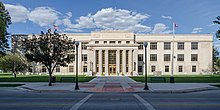
The Supreme Court of India is the supreme judicial authority and the highest court of the Republic of India. It is the final court of appeal for all civil and criminal cases in India. It also has the power of judicial review. The Supreme Court, which consists of the Chief Justice of India and a maximum of fellow 33 judges, has extensive powers in the form of original, appellate and advisory jurisdictions.
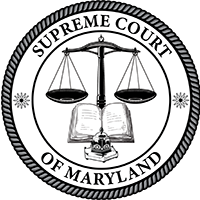
The Supreme Court of Maryland is the highest court of the U.S. state of Maryland. The court, which is composed of one chief justice and six associate justices, meets in the Robert C. Murphy Courts of Appeal Building in the state capital, Annapolis. The term of the Court begins the second Monday of September. The Court is unique among American courts in that the justices wear red robes.
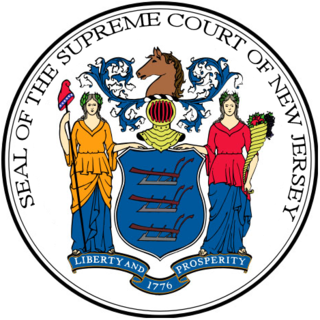
The Supreme Court of New Jersey is the highest court in the U.S. state of New Jersey. In its current form, the Supreme Court of New Jersey is the final judicial authority on all cases in the state court system, including cases challenging the validity of state laws under the state constitution. It has the sole authority to prescribe and amend court rules and regulate the practice of law, and it is the arbiter and overseer of the decennial legislative redistricting. One of its former members, William J. Brennan Jr., became an associate justice of the Supreme Court of the United States.

The Michigan Supreme Court is the highest court in the U.S. state of Michigan. It is Michigan's court of last resort and consists of seven justices. The Court is located in the Michigan Hall of Justice at 925 Ottawa Street in Lansing, the state capital.

The Supreme Court of Florida is the highest court in the U.S. state of Florida. It consists of seven justices—one of whom serves as Chief Justice. Six members are chosen from six districts around the state to foster geographic diversity, and one is selected at large.
The Alaska Supreme Court is the state supreme court for the U.S. state of Alaska. Its decisions are binding on all other Alaska state courts, and the only court its decisions may be appealed to is the Supreme Court of the United States. The Alaska Supreme Court hears appeals from lower state courts and also administers the state's judicial system.

The Indiana Supreme Court, established by Article 7 of the Indiana Constitution, is the highest judicial authority in the state of Indiana. Located in Indianapolis, the Court's chambers are in the north wing of the Indiana Statehouse.

The Constitution of the State of Florida is the document that establishes and describes the powers, duties, structure, and function of the government of the U.S. state of Florida, and establishes the basic law of the state. The current Constitution of Florida was ratified on November 5, 1968.

The government of Florida is established and operated according to the Constitution of Florida and is composed of three branches of government: the executive branch consisting of the governor of Florida and the other elected and appointed constitutional officers; the legislative branch, the Florida Legislature, consisting of the Senate and House; and the judicial branch consisting of the Supreme Court of Florida and lower courts. The state also allows direct participation of the electorate by initiative, referendum, and ratification.

The Supreme Court of Oklahoma is a court of appeal for non-criminal cases, one of the two highest judicial bodies in the U.S. state of Oklahoma, and leads the judiciary of Oklahoma, the judicial branch of the government of Oklahoma.

The Utah Supreme Court is the supreme court of the state of Utah, United States. It has final authority of interpretation of the Utah Constitution. The Utah Supreme Court is composed of five members: a chief justice, an associate chief justice, and three justices. All justices are appointed by the governor of Utah, with confirmation by the Utah Senate. The five justices elect one of their own to serve as chief justice and another to serve as associate chief justice, each for a term of four years.

The Arizona Supreme Court is the state supreme court of the U.S. state of Arizona. Sitting in the Supreme Court building in downtown Phoenix, the court consists of a chief justice, a vice chief justice, and five associate justices. Each justice is appointed by the governor of Arizona from a list recommended by a bipartisan commission. Justices stand for retention in an election two years after their appointment and then every six years. They must retire at age 70.

The Colorado Supreme Court is the highest court in the U.S. state of Colorado. Located in Denver, the court was established in 1876. It consists of a Chief Justice and six Associate Justices who are appointed by the Governor of Colorado from a list of candidates approved by a state judicial commission. Each justice faces a retention election two years after his or her appointment and every ten years thereafter, with mandatory retirement at age 72.
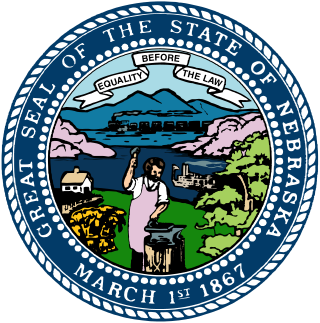
The Nebraska Supreme Court is the highest court in the U.S. state of Nebraska. The court consists of a chief justice and six associate justices. Each justice is initially appointed by the governor of Nebraska; using the Missouri Plan, each justice is then subject to a retention vote for additional six-year terms. The six associate justices each represent a Supreme Court district; the chief justice is appointed at-large.
A judicial retention election is a periodic process in some jurisdictions whereby a judge is subject to a referendum held at the same time as a general election. The judge is removed from office if a majority of votes are cast against retention.
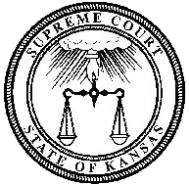
The Kansas Supreme Court is the highest judicial authority in the U.S. state of Kansas. Composed of seven justices, led by Chief Justice Marla Luckert, the court supervises the legal profession, administers the judicial branch, and serves as the state court of last resort in the appeals process.

The New Mexico Supreme Court is the highest court in the U.S. state of New Mexico. It is established and its powers defined by Article VI of the New Mexico Constitution. It is primarily an appellate court which reviews civil and criminal decisions of New Mexico's trial courts of general jurisdiction and certain specialized legislative courts, only having original jurisdiction in a limited number of actions. It currently resides in the New Mexico Supreme Court Building in Santa Fe.

Varnum v. Brien, 763 N.W.2d 862, was an Iowa Supreme Court case in which the Court unanimously held that the state's limitation of marriage to opposite-sex couples violated the equal protection clause of the Iowa Constitution. The case had the effect of legally recognizing same-sex marriage in Iowa. In 2007, a lower court had granted summary judgment in favor of six same-sex couples who sued Timothy Brien, Polk County Recorder, for refusing to grant them marriage licenses.
In the United States, the government of each of the 50 states is structured in accordance with its individual constitution. In turn, each state constitution must be grounded in republican principles. Article IV, Section 4, Clause 1 of the United States Constitution tasks the federal government with assuring that each state's government is so organized.
Kate M. Fox is an American lawyer who has served as the chief justice of the Wyoming Supreme Court since 2021.
